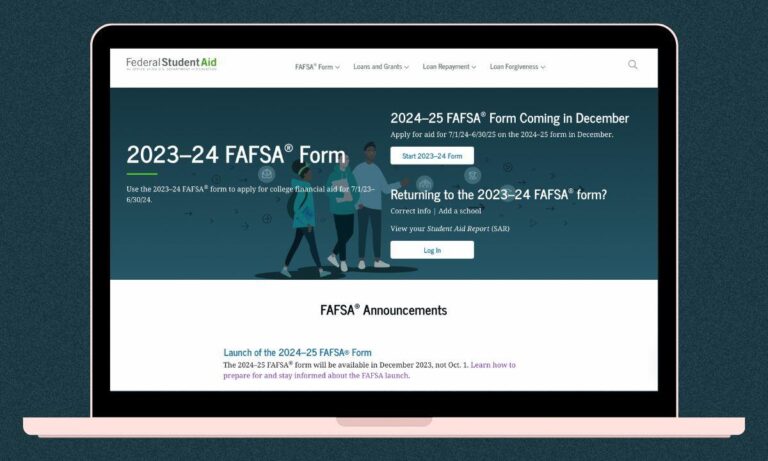Federal Staffing Deficits Lead to Major Delays in College Financial Aid Processing
Recent reductions in federal workforce numbers have resulted in significant slowdowns in the handling of college financial aid applications, creating uncertainty for countless students and their families. With fewer staff members available, essential procedures such as application evaluation, verification, and approval for fund disbursement are experiencing prolonged wait times compared to previous years. These delays jeopardize students’ ability to enroll promptly and secure necessary financial support for tuition, accommodation, and other educational expenses.
Educational institutions and advocacy organizations are calling on the federal government to prioritize recruitment and resource allocation to ease these bottlenecks. Meanwhile, students are encouraged to anticipate longer processing periods and consider alternative financial resources. The primary challenges currently observed include:
- Prolonged verification procedures requiring additional paperwork
- Postponed grant and loan payments complicating financial planning
- Longer wait times for communication with financial aid offices
| Processing Phase | Typical Duration | Current Delay |
|---|---|---|
| Initial Application Assessment | 2-3 weeks | 5-7 weeks |
| Verification Requests | 1-2 weeks | 3-4 weeks |
| Approval for Disbursement | 1 week | 2-3 weeks |
Student and Institutional Impacts Widen Access and Equity Gaps
Across the country, students are encountering unprecedented obstacles as delays in financial aid processing disrupt their academic trajectories and intensify existing disparities. Those from low-income backgrounds and first-generation college families, who depend heavily on prompt aid disbursements, are often forced to scramble for funds to cover tuition, housing, and essential living costs. This situation contributes to higher dropout rates, deferred enrollment, and increased stress—issues that disproportionately affect marginalized groups and deepen educational inequities.
Colleges and universities, already grappling with tight budgets, are burdened further by the administrative demands of managing aid backlogs and resolving technical difficulties. Smaller institutions, including community colleges, report more severe challenges due to limited staffing. This creates a feedback loop where resources are diverted from student support services to address financial aid crises, undermining efforts to assist vulnerable populations.
- Heightened financial instability for students awaiting aid disbursements
- Longer processing periods for financial aid applications
- Increased administrative strain on institutional staff
- Widening equity disparities among underrepresented student groups
| Area of Impact | Effect on Students | Effect on Institutions |
|---|---|---|
| Financial Security | Difficulty covering immediate expenses | Surge in emergency aid requests |
| Enrollment Choices | Postponed or canceled enrollment | Unpredictable enrollment trends |
| Administrative Capacity | Confusion over aid status | Overworked staff and slower processing |
Challenges in Modernizing Federal Aid Systems Amid Growing Demand
The federal agency tasked with distributing billions in student grants and loans is struggling to upgrade its outdated technology infrastructure while managing an increasing volume of applications. Frequent system outages and processing delays have become more common, driven by budget reductions and a shrinking workforce. Staff report that legacy platforms are ill-equipped to handle peak application periods, causing slower approvals and leaving many students and families in uncertainty during crucial enrollment windows.
Attempts to implement modern technology solutions have been hindered by a shortage of skilled IT personnel and competing agency priorities. Insider accounts reveal that persistent staffing gaps have led to a reliance on contractors and temporary employees, who often lack the deep institutional knowledge necessary to resolve complex issues efficiently. Key obstacles include:
- Outdated software: Systems developed decades ago are incompatible with current digital processes, complicating modernization efforts.
- Workforce shrinkage: Hiring freezes and attrition have left teams understaffed during peak financial aid cycles.
- Rising application numbers: Increased demand has outstripped the agency’s operational capacity.
| Year | Staff Size | Applications Processed | Average Delay (Days) |
|---|---|---|---|
| 2019 | 3,200 | 12 million | 5 |
| 2022 | 2,600 | 15 million | 12 |
| 2024 | 2,100 | 17 million | 18 |
Strategies for Policy Reform and Investment to Address Financial Aid Delays
Resolving the ongoing challenges in financial aid distribution requires focused policy reforms and substantial investment in federal staffing. Restoring critical personnel is vital to reducing processing times, especially for programs serving low-income and first-generation college students. Lawmakers should consider establishing dedicated funding streams to support continuous recruitment, training, and retention of qualified staff, alongside deploying modernized technology platforms that automate and streamline application workflows.
Recommended actions include:
- Boosting budget allocations for federal financial aid offices to address understaffing.
- Upgrading IT infrastructure to minimize manual errors and accelerate approvals.
- Implementing performance standards with accountability measures to ensure timely aid delivery.
- Fostering public-private partnerships to supplement federal resources and expertise.
| Policy Initiative | Anticipated Result |
|---|---|
| Investment in Staffing | 30% reduction in processing times |
| Technology Enhancements | Lower application error rates |
| Performance Monitoring | Greater accountability and transparency |
| Public-Private Collaboration | Expanded reach and efficiency of aid programs |
Conclusion
As students and families navigate the increasingly complex process of financing higher education, recent federal staffing reductions have introduced significant barriers to the timely distribution of financial aid. With delays and technical issues becoming more frequent, the repercussions are being felt across campuses nationwide. Policymakers and education leaders face urgent pressure to implement reforms and reinvestments that will restore efficiency and equity to a system critical to millions of American students. The upcoming months will be pivotal in determining whether these efforts can successfully address the current challenges and secure access to higher education for all.







